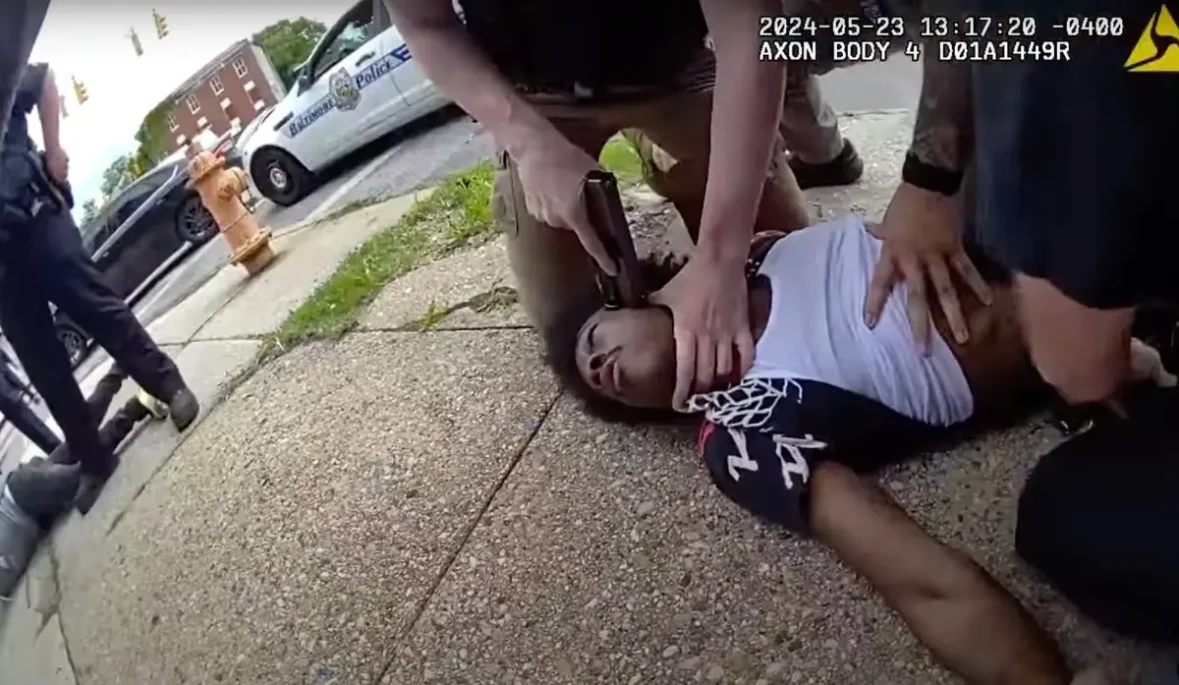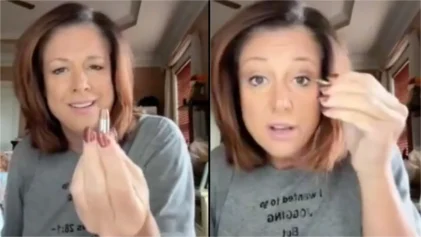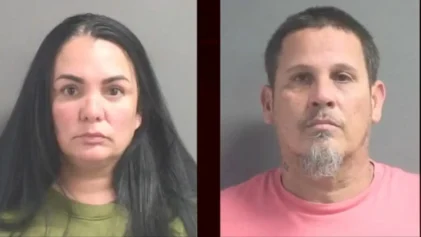The Baltimore State’s Attorney’s Office announced on Sept. 5 that it won’t pursue criminal charges against a Baltimore police detective who pressed his gun against the temple of a Black man who was lying on the sidewalk and held down by other officers during an arrest in May.
Defense attorneys for Jaemun Joyner, the 24-year-old man arrested on May 23, have accused police of using excessive force on Joyner and for stopping him without probable cause. Charges against Joyner were dropped, but the police officer’s conduct is reportedly still under investigation by the police department.
A video of the incident on May 23, captured by a body-worn police camera and first aired by WBAL-TV News in July, showed a group of five police officers arriving at the scene in front of a corner bodega in East Baltimore as Detective Connor Johnson tried to restrain Joyner and place him in custody.

The officers were responding to a robbery in the area and searching for a suspect described as a 6-foot Black male wearing a brown hoodie and a ski mask. Joyner, who is about five feet seven inches, was wearing a red and black shirt when he was first detained by the department’s District Action Team (DAT), reported Baltimore Magazine.
DAT is an 80-person unit created in 2017 after the police department disbanded its Gun Trace Task Force, whose members had been found guilty of racketeering, robbery, and extortion charges and who commonly stopped people without reasonable suspicion or probable cause, according to the magazine.
Detective Phil Polanco told reporters in July that officers were trying to put Joyner in handcuffs when he got away and fled on foot before being apprehended again.
In the video, Joyner is shown twisting away from officers and briefly running before being grabbed and held down on the sidewalk.
“He’s reaching for something!” Det. Christian Agard screams.
“I ain’t reaching for nothing,” Joyner responds, and one of the detectives presses his knee into the chest of Joyner, who says, “I can’t breathe.”
Officers begin to search his pockets, and Joyner screams, “What did you just put in my pocket?” and, “He put something in my pocket!”
Johnson then put one hand on Joyner’s neck, pressing his face against the sidewalk, and took out his service weapon, putting the barrel of the Glock-22 to Joyner’s temple for about six seconds before pulling the gun away and standing up.
In their arrest report, officers said they found a handgun, eight live .22-caliber rounds, a magazine and a powdery substance they suspected to be heroin in Joyner’s possession.
The public release of the video led to a demand from the Police Accountability Board for Baltimore City that Johnson be suspended.
“I am sure that nowhere in the officer training is it justifiable to point a gun at point-blank range at the temple of an already subdued subject,” said board chair Joshua Harris in a statement. “Mistakes like this have the potential to end lives or negatively impact them forever,” he said and called for Johnson to “undergo rigorous training on de-escalation and appropriate use of force and a firearm.”
“These officers went over the top. This was unnecessary, unprovoked, and in the end, unacceptable,” Tony Garcia, Joyner’s defense attorney, told the Baltimore Sun.
“They wanted to put an exclamation on their use of force,” said Garcia. “Not only is it excessive, but they wanted to imprint a mark of fear in his mind. That is unacceptable. That cannot be allowed to happen.”
Joyner’s defense attorneys also complained that the police officers lacked probable cause to arrest their client, who did not match the description of the suspect they sought, and further noted that the victim told police at the scene of Joyner’s arrest that he was not the person who robbed him.
Police commissioner Richard Worley defended Johnson’s actions at a news conference in July, reported the Sun, saying, “He was out there doing his job.” Worley said that he had been in similar situations with an armed suspect trying to free his hands and that “you try to do whatever you can to get him in custody. … You’re scared, you’re fighting for your life because you don’t know what he’s going to do.”
Joyner was charged with handgun possession, possessing a loaded handgun, and drug possession. He spent 54 days in jail and missed reporting to a new job during that time. All the charges against him were dismissed in July “for further investigation” by the Baltimore State’s Attorney’s Office.
The officers’ conduct in the incident was under investigation by Baltimore Police, spokeswoman Lindsey Eldrige said at the time of the video’s release in July, noting that none of the officers involved had been suspended.
Following the State Attorney’s Office’s decision not to charge Johnson, the Baltimore Police Department will finalize its investigation of the incident for potential policy violations and recommend any administrative charges to the Administrative Charging Committee, a civilian body that reviews all police investigations that involve a member of the public, reported the Sun.
“I think the family is appalled,” Garcia told Baltimore Magazine. “They’re very disappointed that this officer will not be held accountable — and neither will the officers who saw what happened and failed to report it.”
Baltimore police are still operating under a 2017 federal court-ordered consent decree over policing practices that violated citizens’ constitutional rights, including unlawful use of force by its officers. The Justice Department investigation that led to the order came in the wake of the in-custody death of Freddie Gray whose neck was broken in the back of a police van in April 2015.
Public defenders in Baltimore are concerned that officers in the DAT unit are resuming the kind of misconduct that the consent decree is meant to eradicate.
“Anecdotally, we’re seeing lots of questionable stops and what appears to be falsely generated reasons for stops,” said Deborah Katz Levi, director of Special Litigation for the Maryland Office of the Public Defender. “We’re definitely seeing the old-school ways showing up again.”
Last year, The Garrison Project, an investigative journalism organization, reported that an analysis of disciplinary information by the Maryland Public Defender’s Office about the police District Action Team found that its 79 officers have been investigated more than 700 times, including 410 investigations for use of force and 257 Internal Affairs investigations. DAT’s officers have also faced 21 civilian review board investigations and nine civil lawsuits.
That data on investigations is not indicative of impropriety, said Eldridge, the police department’s public affairs officer.
“Due to their role and enforcement function, we understand that our DATs are subject to a greater number of complaints in the execution of their duties,” she said. “From traffic stops, executing warrants and identifying individuals responsible for drug trafficking and violence, these teams focus on many high-level offenses that can produce dangerous interactions,” she said.
The implementation of reforms by the Baltimore Police Department, ordered in the consent decree, was only about 5 percent complete as of January, said Worley.


